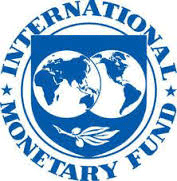SEVEN BILLION TREES
LET US SOLVE THE GLOBAL WARMING PROBLEM NOW!
Let us examine
the 80% of allocated funds ($720 million of $900 million) through the
United Nations to other than Africa. Does this breakdown address the highest need to deal
with Global Warming? It would appear that all these agencies are
off the mark to
“helping countries build Resilience to climate
change’s impacts.“ Building this kind of Resilience is like locking
the stable door after the horse has been stolen.
What comes
first? An
Emission absorption solution or manufacturing of face masks for everyone.
The situation cannot be changed by improving security after a major
theft. We must deal with the Security Problem first! The door (Our world as we
know it) cannot
be vulnerable to attack.
To correct the problem we must fix the barn door (Emission absorption Solution) or
harness the horse (Reduce Emissions). Now we really must catch the horse (Solve
the emission problem), but very few people (the Millennium Development Goals Achievement Fund (MDG-F) are searching for the horse. This includes all of the participants
starting from the largest: UNDP, UNICEF, FAO,
UNESCO, ILO, UNFPA, WFP, UNIDO, UNWOMEN, PAHO/WHO and IOM.
In the meantime, our governments are simply thinking about taxing some
polluters a little and readjusting the tax to keep it neutral. Our Governments
are only talking to locksmiths. In other words,
they are not addressing the problem at all. (Remember:
the horse has already bolted).
Carbon Emission to
be Solved
The world leaders must
find a way to absorb carbon dioxide emissions that is in our atmosphere now.
Trees and soils are the only way to absorb the present glut of CO2 in
your world.
Presently these funds
are improperly managed because they attempt to make the tax neutral by
redirecting the fund for tax rebates to working families, cutting sales tax and
reducing the tax on manufacturing. All this is very admirable but it doesn't solve the high concentration of carbon dioxide in our atmosphere, which is
presently causing global warming.
The Funds to Finance
Rehabilitation
There are two sources
of funds based on two different methods of absorbing carbon emissions: one from biochar in soils and the
other from planting of trees.
On one hectare of farm
land of 500 trees:
1. Land Degradation
Neutrality (LDN) Fund for BIOCHAR IN SOILS
LND Fund seeks to
mobilize US$2 billion annually; they estimate that the average cost of
land rehabilitation is $100- $150/ha. In Africa, five
countries have voluntary committed to LND including Algeria,
Chad, Ethiopia, Namibia and Senegal.
·
500
trees/hectare will yield 50 tons of Carbon from branches and weeds or (50 tons
x ⅓) 16.7 tons of CO2 emission absorption
from the production of BIOCHAR.
·
The
value of the capture of carbon in the form of Biochar is
$250/year at the tax rate of $15/ton. (The LDN Fund offers $150/year based on
$10/ton of carbon emissions.)
2. The Carbon Tax Fund for TREES: the fund can support
500 trees for a total cost of $200/year for a period of 25 years plus an
initial $750:
·
There
will be 500 trees with a NPV of $0.50/tree to $2.50/tree: at the rate of
$15/ton, the Net Present Value (NPV) is $200/year.
·
Add
$1.00/tree for reporting and auditing for 25 years (that's a one-off total -
not per year): $500 to be monitored by Living Water
MicroFinance Inc. for
25 years.
This part of the fund
will support each 1.5 acre farm that will have access to $150/year in the form
of micro finance assistance complements of the Carbon Tax Fund. Each $150 will
be recycled nine times for a total of $1,350.
http://hugenergy.us/carbon-tax/
ALL THE
FUNDS WILL BE DIRECTED TO THE PRODUCTION OF TREE NURSERIES IN AFRICA: $80,000/TODAY’S TALL TREE
NURSERY
https://livingwatermicrofinance.org/seven-billion-trees/
SOME
GOVERNMENTS HAVE TREATED FORESTS GENEROUSLY
Farmers who plant trees get generous payments for 15 years.
The rate in England is £1.28
($1.72) per tree, plus grants for fences and gates.
With perhaps 20 years to go before conifers are harvested,
they often sell to pension funds and other investors.









